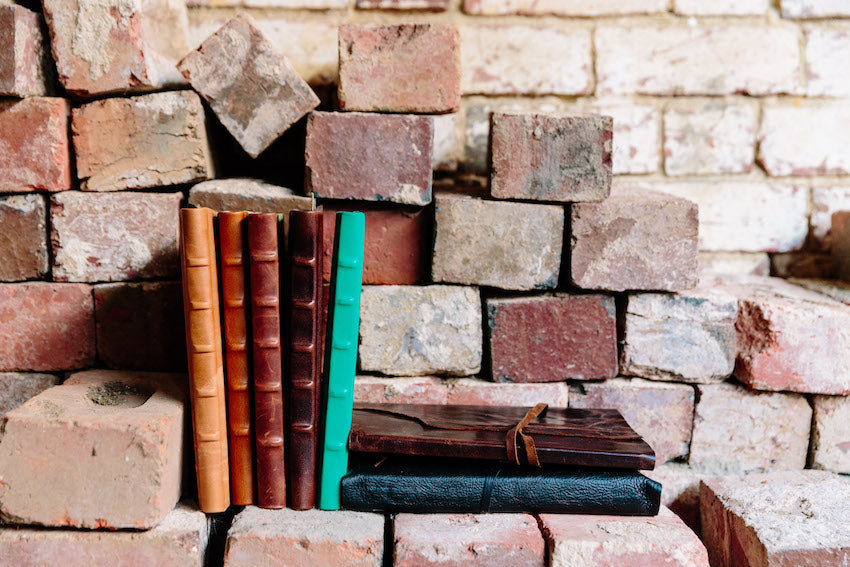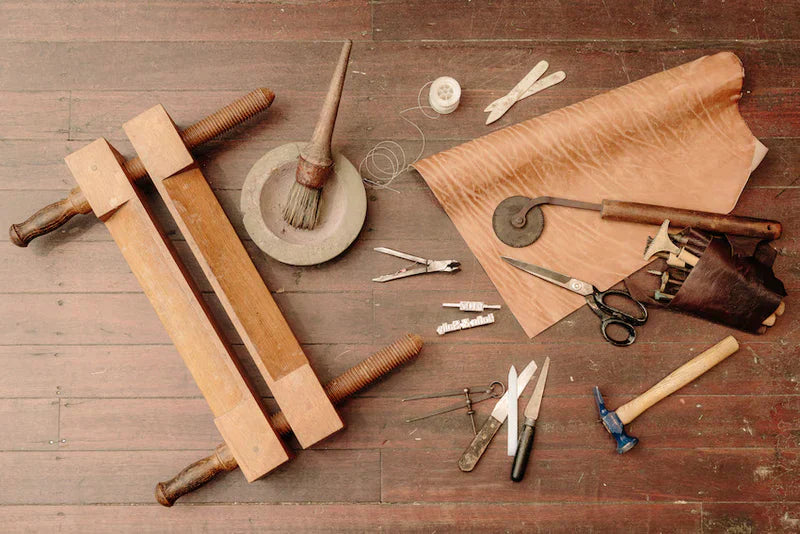
Journalling & Bookbinding: A Perfect Match
The empty page is an invitation
There’s nothing quite like the weight of a freshly bound journal in your hands.
Maybe you made it yourself — running your fingers along the spine, knowing exactly how each section was sewn and joined to the next. Maybe you chose it carefully, drawn to the patina of the cover or the way the pages lay beautifully flat.
Either way, the feeling is the same: potential.
But for many, the first page can feel like a hurdle. Too new. Too blank. Too easy to get “wrong.” I often hear people in the store say things like "It's too good to use" or "My handwriting is not good enough"
But here’s the truth: a journal doesn’t need to be perfect.
It just needs to be opened.
Why journalling & bookbinding go hand in hand
Bookbinding is a craft of materials, tools, and time. It slows you down.
Journalling does the same — it makes you think about what to put on the page.
When you bind a journal, you’ve already started the conversation. You’ve made the space where your thoughts, sketches, or scribbles will live. It’s already personal, even before the first word is written.
Journalling isn’t about beautiful handwriting or keeping up a daily habit. It’s about noticing.
And that’s what craft teaches, too — to observe closely, to take care, to slow down.
Binding your own journal is like setting the stage for something meaningful — even if you’re just jotting down grocery lists or morning thoughts.
Five ways to use your journal
There’s no right or wrong way to fill a notebook — but here are five options in case you need some ideas to get started:
1. Morning Mindfulness
A brain-dump of sorts. Write three pages of whatever’s in your head — no filter.
Best fit: Any journal you’ll actually open.
2. Sketch Journal
Quick drawings, loose colour, pressed leaves — anything visual or tactile.
Best fit: For sketching, our section sewn blank journals lie beautifully flat and love watercolour or pencil.
3. Memory Keeping
Notes from the day, gratitude lists, things your kids said that made you laugh.
Best fit: A simple lined journal with a beautiful cover — the kind you’ll want to keep.
4. Travel Diary
Document the places you’ve been, or the moments that felt like travel.
Best fit: Our 'Traveller's Journal' with it's map lined endpapers — part journal, part keepsake.
5. Project Tracker
Gardening, sewing, reading, planning a big birthday — let your journal follow along.
Best fit: Hardcover casebound journals offer structure and longevity.
What if you don’t know where to start?
in our workshops, we’ve had students finish their first book, hold it up proudly… and then whisper, “But I don’t want to ruin it.”
Your journal doesn’t need to be another item on the to-do list. Let it become a quiet ritual — a way to honour your days, not organise them.
It’s not about writing every day. It’s about noticing what’s worth keeping.
Use the good book
If you’ve made a journal — or bought one you’ve been “saving” — this is your sign: use it.
The good book is the one you already have. And it’s waiting.
→ If you need a new journal (& who doesn't?) You can browse our handcrafted journals here
→ Want to make your own? Here’s where we’d start.




Leave a comment
This site is protected by hCaptcha and the hCaptcha Privacy Policy and Terms of Service apply.